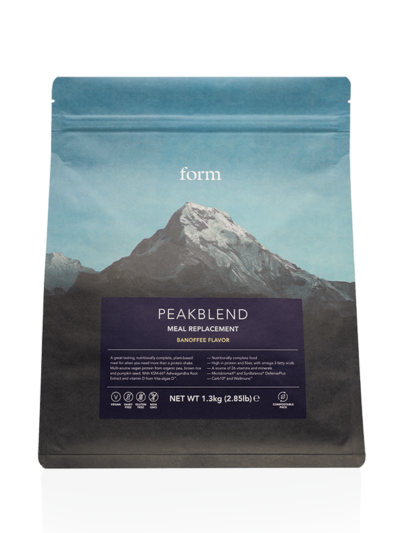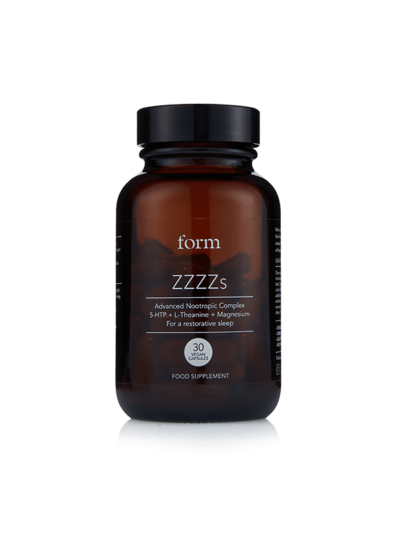The Signs That Indicate You Could Be Deficient in Vitamin D

The shift to home working after the pandemic has some pretty great perks. You can fit in a quick workout between Zoom calls, tackle your laundry during email breaks and enjoy the luxury of nudging your alarm a little later. But working from your kitchen table has some lesser-discussed drawbacks too, one of which is an increased risk of vitamin D deficiency.
Around 1 in 6 adults are estimated to have low levels of vitamin D in their blood, which is essential for keeping bones and teeth healthy, regulating mood and upping resistance against winter bugs.
The tricky thing about vitamin D is that we can’t get the levels we need from our diet alone. The best source is stepping out into the sunshine, as direct sunlight converts a chemical in your skin into an active form of the vitamin.
So, while you might be getting more quality kip and longer exercise breaks, cutting your commute and working from bed could mean you’re missing out on all-important natural light exposure.
To shed light on why vitamin D is so important and how to stop a deficiency in its tracks, Form’s Head of Nutrition Dr. Adam shares all your need-to-knows.

What is vitamin D and how do we get it?
Vitamin D, often referred to as the ‘sunshine vitamin,’ is fairly unique because our bodies can manufacture it, rather than relying on acquiring it from food sources.
When your skin is exposed to UVB rays from sunlight, a chemical reaction activates the vitamin, turning it into a usable form.
However, this process typically only happens during certain times of the year. In the UK, for instance, UVB exposure is sufficient for vitamin D synthesis during the spring and summer, and even then, factors like staying indoors and working from home can limit its production.
For decades, it was assumed that sunlight provided enough vitamin D, so we weren’t provided with dietary recommendations, but that has since changed. In the UK, we’re now recommended to hit a daily intake of 10 micrograms (400 IU) of vitamin D for adults.
While vitamin D can be found in certain foods, like oily fish, eggs and fortified foods, getting enough from diet alone can be really challenging. For this reason, supplementation is often the easiest way to ensure you’re topped up.
What are the signs of a deficiency?
A mild vitamin D deficiency can be hard to spot, as it often shows no symptoms at all, or its signs – such as fatigue or low mood – can easily be mistaken for other health issues.
Severe deficiency can lead to rickets in children, a condition where bones weaken due to poor calcium absorption. In adults, it can affect bone integrity and may increase the risk of falls and fractures, particularly in the elderly. Some research also links vitamin D deficiency to growth issues in children and reduced bone density in adults.
Beyond bone health, vitamin D plays an important role in our immunity. Low levels have been linked to a higher risk of winter colds and even more severe conditions, like complications from COVID-19. Plus, there’s also emerging scientific evidence suggesting links between vitamin D deficiency and chronic illnesses, including diabetes and cardiovascular disease, particularly in at-risk populations.
Less obvious symptoms like fatigue, mood changes or frequent colds and flus could hint at low vitamin D, but as these signs often overlap with other medical conditions, it’s often hard to spot a deficiency yourself.

How can I prevent or treat a vitamin D deficiency?
Testing your vitamin D levels is fairly straightforward and typically involves a blood test to measure plasma 25-hydroxyvitamin D. Some healthcare providers offer this, and private home testing kits are also available online.
A quality supplement, like Form’s Multi, is the most reliable way to maintain good vitamin D levels throughout the year, especially during the winter. While sunlight exposure is effective, it’s limited by season, geography and everyone’s individual lifestyles.
Even in sunny countries, cultural practices or your individual skin colour can reduce vitamin D synthesis. For example, studies have found that people of south Asian heritage often require supplementation year-round due to reduced efficiency in producing vitamin D from sunlight.
Final word
Supplementing vitamin D is one of the most important things we can do to protect our health during the dark winter months. If you suspect a deficiency is going on for you, testing can provide clarity, so it’s worth chatting to your GP about getting your blood looked at.
That said, taking a year-round daily supplement is a sensible step for most people and is now advised by most public health bodies, so try introducing one into your routine and seeing the difference it makes.
A final important caveat to make? Don’t expect overnight a miracle to your mood and energy – it can take several weeks to months for your vitamin D levels to improve and for you to feel the benefits of supplements, so consistency is always key.


















